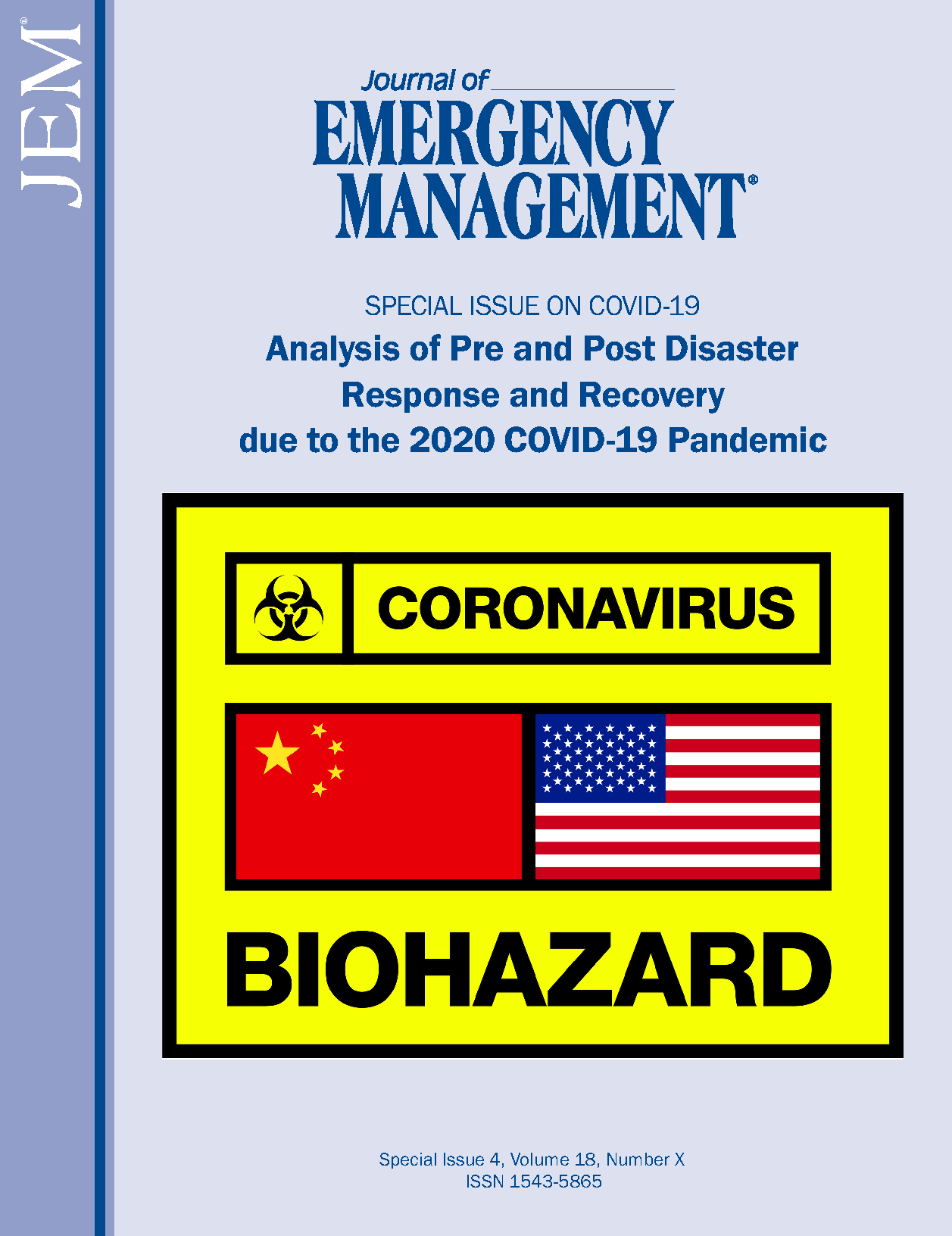Command and control in hospitals during SARS-CoV-2 pandemic: The windmill model of disaster response
DOI:
https://doi.org/10.5055/jem.2020.0520Keywords:
disaster response command and control contingency care, crisis care, mass critical careAbstract
Hospitals are the focus of the fight against SARSCoV-2 pandemic. To meet this challenge hospitals need a Disaster Response Plan and a Hospital Incident Command System (HICS) as a crisis leadership tool. The complex dependency between the systems staff, supplies, and space during the SARS-CoV-2 pandemic is a major problem for hospitals. To take the appropriate countermeasures, the effects of the crisis on these systems must be detected, analyzed, and displayed. The presentation and interpretation of such complex processes often poses serious problems for the hospitals’ incident commanders.
In this article, we describe a new model that is able to display these complex interrelationships within the command process. The model was developed and deployed during the disaster response to SARS-CoV-2 pandemic in order to facilitate the entire command process and to improve hospital disaster response. The approach of the model is as simple as it is innovative. It perfectly symbolizes the basic principle of disaster medicine: keep is safe and simple. It will help hospitals to improve command and control and to optimize the disaster response during SARS-CoV-2 pandemic.
References
Nacoti M, Ciocca A, Giuppone A, et al.: At the epicenter of COVID-19 pandemic and humanitarian crisis in Italy: Changing perspectives on preparation and mitigation. NEJM Catalyst. 2020; 10: 1-5. doi:10.1056/CAT.200080.
Hick JL, Biddinger PD: Novel Coronavirus and old lessons—preparing the health system for the pandemic. NEJM. 2020; 382: e55 1-3. doi: 10.1056/NEJMp2005118.
Gauss T, Pasquier P, Joannes-Boyau, et al.: Preliminary pragmatic lessons from SARS-CoV-2pandemic from France. Anaesth Crit Care Pain Med. 2020; 39: 329-332. doi:10.1016/j.accpm.2020.05.005.
Hick JL, Sharon E, Hanfling D, et al.: Surge capacity principals: Care for the critically ill and injured during pandemics and disasters—CHEST Consensus Statement. Chest. 2014; 146 (Suppl): e1S-e16s.
Hick JL, Barbera JA, Kelen GD: Refining surge capacity: Conventional, contingency and crisis capacity. Disaster Med Public Health Prep. 2009; 2 (Suppl): S59-S67.
Carenzo L, Costantini E, Greco M, et al.: Hospital surge capacity in a tertiary emergency referral centre during the COVID-19 outbreak in Italy. Anaesthesia. 2020; 75 (7): 928-934.
Downloads
Published
How to Cite
Issue
Section
License
Copyright 2007-2025, Weston Medical Publishing, LLC and Journal of Emergency Management. All Rights Reserved.
Leave Nobody Behind: Emergency Management in a More Inclusive Way is a trademark of Journal of Emergency Management






